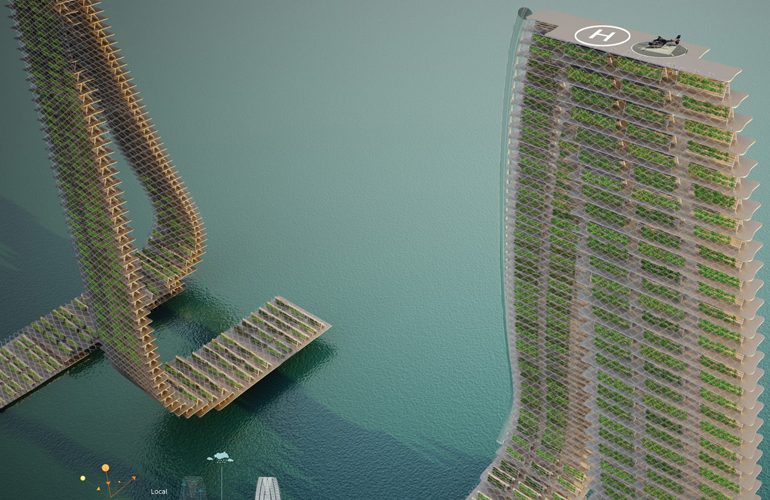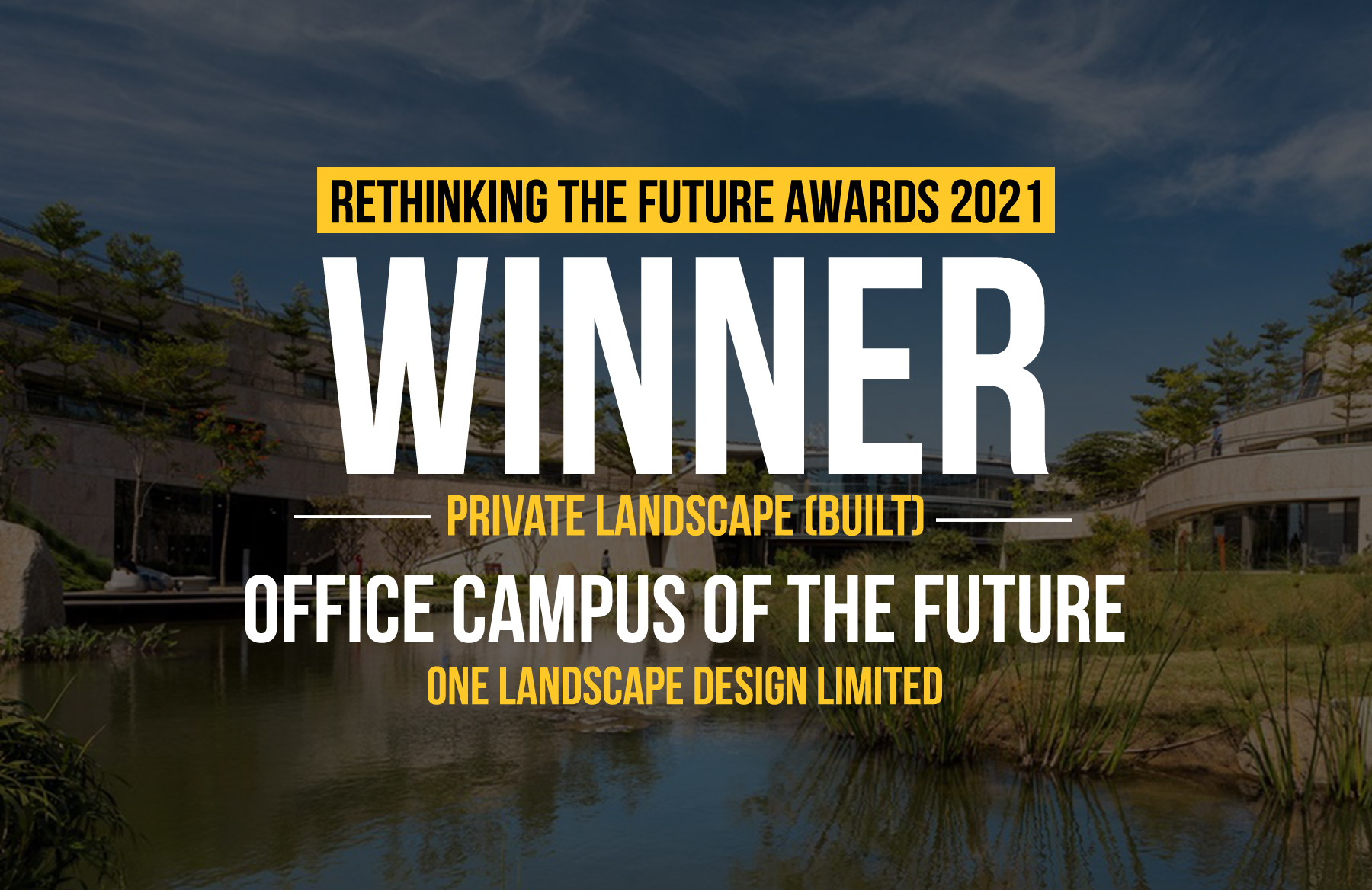“The world population is predicted to grow from 6.9 billion in 2010 to 8.3 billion in 2030 and to 9.1 billion in 2050. By 2030, food demand is predicted to increase by 50% (70% by 2050). The main challenge facing the agricultural sector is not so much growing 70% more food in 40 years, but making 70% more food available on the plate.”
Third Award | RTFA 2014 Awards
Category: Urban Design Concept
Participant Name: Anam Khan
Country: India
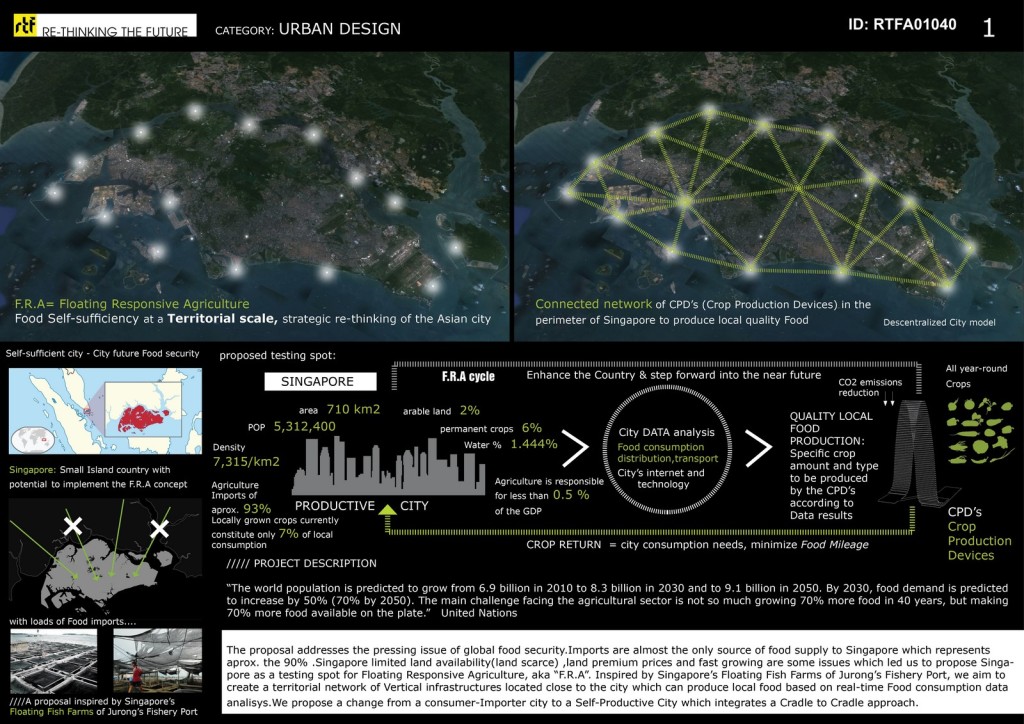
United Nations
We definitely need to Re-Think the future of Food supply!
F.R.A (Floating Responsive Agriculture) .The proposal addresses the pressing issue of global food security and introduces a unifying urban design strategy based on a network idea which deals with future city food supply needs and integrate connected self-sufficiency into our cities.Imports are almost the only source of food supply to Singapore which represents aprox. the 90%. Singapore limited land availability (land scarce) ,a dense nation, land premium prices and fast growing are some issues which led us to propose Singapore as a testing spot for “F.R.A”. The floating strategy and design is Inspired by Singapore’s Floating Fish Farms of Jurong’s Fishery Port.
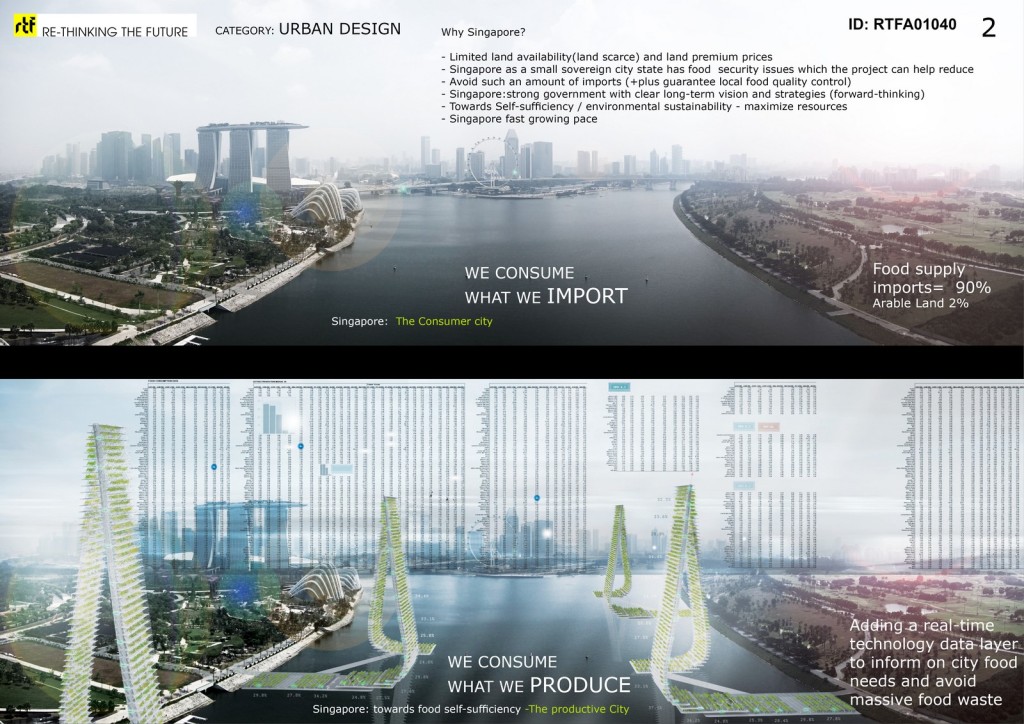
It transform the city nearby territories into more stimulating environments capable of self-producing quality food in order to avoid massive imports from abroad, to reduce Food Mileage, reduce CO2 emissions and bring new fresh vertical farming closer to dense city areas. A new information technology Layer on top of the physical vertical structures will control via protocols the necessary food production and inform in real-time the CPD’s (Crop Production Devices) about the type and amount of crops the city needs.Thus, we avoid to have massive food wastes. All this, aiming to contribute to progress in making the world more habitable.
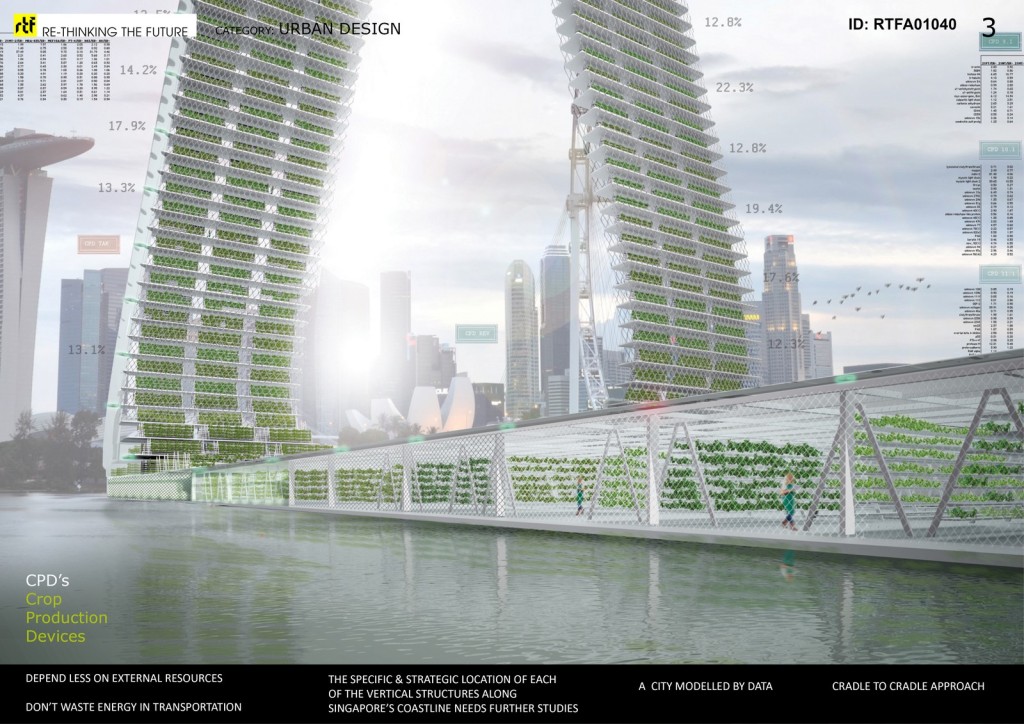
“THE LOOP SHAPE OF THE VERTICAL STRUCTURES WILL ALLOW MAXIMUM SUNLIGHT FOR CROPS TO GROW PROPERLY. WE PROPOSE A SERIES OF ROTATING RACKS ON EACH FLOOR TO IMPROVE THE SYSTEM.”
The information layer system will inform a series of CPD’s(crop Production Devices),which will be located on Singapore’s water perimeter, about the food supply demands according to established protocols and logics.Some of the year-round crops to be produce: Bayam,Lettuce,Gai Lan,KangKong,Nai Bai, xiaobaicai,spinach,etc.
Singapore: Potential for Territorial Vertical farming
Why Singapore?
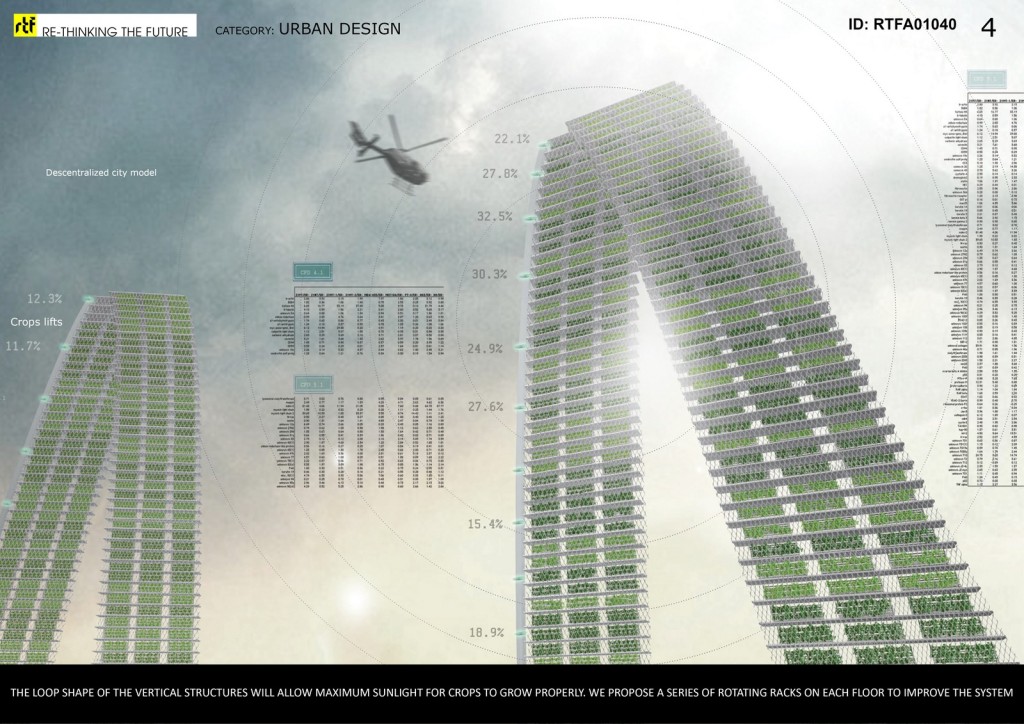
– Limited land availability(land scarce) and land premium prices
– Singapore as a small sovereign city state has food security issues which the project can help reduce
– Avoid such an amount of imports (+plus guarantee local food quality control)
– Singapore:strong government with clear long-term vision and strategies (forward-thinking)
– Towards Self-sufficiency / environmental sustainability – maximize resources
– Singapore fast growing pace
LOW IMPACT STRUCTURES /////////////////// SUSTAINABLE APPROACH / ECOLOGY
-Reduce Food Mileage: lower emissions of carbon dioxide (CO2) , the main greenhouse gas
-Protected-outdoor green houses,optimum sun light
-Water-driven green technology, controlled water supply , desalination processes
-Monitored indoor agriculture -Seed control- Hydroponics -Low impact transportation -Local Healthy food -Water recycling -Renewable energy -Micro-climates

